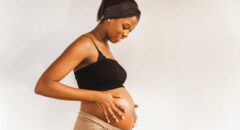 Twins means twice the love, but in what other ways is pregnancy different with twins? Here’s what moms like Beyoncé can expect while carrying two buns in the oven.
Twins means twice the love, but in what other ways is pregnancy different with twins? Here’s what moms like Beyoncé can expect while carrying two buns in the oven.
1. You’ll need to eat up.
The American Congress of Obstetricians and Gynecologists (ACOG) recommends consuming 300 calories per day, per child, above your typical calorie intake—which means taking in an extra 600 calories a day. This should equate to an extra 10 to 15 pounds of weight for twin moms of normal BMI, on top of the standard 25 to 35 pounds for an expectant mom of one (roughly 35 to 45 pounds).
Also, twins may also require mom to increase her folic acid intake to help reduce the risk of birth defects, such as spina bifida.
2. Be prepared to go to the doctor… A LOT.
Doctor visits are routine during a single pregnancy, but twin pregnancies require even more visits with your obstetrician. Ultrasounds tend to happen more frequently with twin pregnancies to check for normal growth, compared to one anatomy scan and one growth scan standard with a single pregnancy.







